Working at height demands meticulous planning and execution, and the selection and operation of access platforms are critical components of ensuring both safety and productivity. However, the complexity of these machines and the diverse nature of work environments can lead to a range of common mistakes. These errors can not only jeopardise the well-being of workers but also result in project delays, increased costs, and potential damage to equipment.
So, the vital question arises: What are the common mistakes to avoid when using access platforms? This comprehensive guide will explore ten key pitfalls that can undermine the safe and efficient use of these essential pieces of equipment from Access Platforms. By understanding these potential errors, you can proactively mitigate risks, optimise your operations, and ensure your projects are completed safely and on schedule.
1. Neglecting Thorough Site Assessments: Setting the Stage for Potential Hazards
One of the most fundamental errors is failing to conduct a comprehensive site assessment before selecting and deploying an access platform. This oversight can lead to the use of unsuitable equipment, inadequate ground preparation, and unforeseen hazards.
Question to Ask: Have we thoroughly assessed the ground conditions, potential obstacles (overhead power lines, confined spaces), and environmental factors (wind, slope) at the worksite?
2. Choosing the Wrong Platform for the Task: Mismatching Equipment and Requirements
Selecting an access platform that doesn’t align with the specific requirements of the job is a common and potentially dangerous mistake. Factors like working height, reach, load capacity, and manoeuvrability must be carefully considered.
Question to Ask: Does the chosen platform provide the necessary working height and reach for all areas of the task? Can it safely accommodate the weight of workers, tools, and materials? Is it manoeuvrable enough for the workspace?
3. Insufficient Operator Training: Putting Untrained Individuals at Risk
Allowing untrained or inadequately trained personnel to operate access platforms is a significant safety hazard and a direct violation of regulations. Proper training ensures operators understand the platform’s controls, safety features, and potential risks.
Question to Ask: Are all operators certified and adequately trained on the specific type of access platform being used? Are refresher training courses conducted regularly?
4. Ignoring Pre-Use Inspections: Failing to Identify Critical Defects
Skipping or rushing pre-use inspections can lead to the operation of faulty equipment. Critical defects, if left unaddressed, can result in malfunctions and accidents.
Question to Ask: Are thorough pre-use inspections conducted daily by a competent person? Are all safety features (guardrails, controls, emergency stops) functioning correctly? Is a documented checklist used and signed off on before each use?
5. Overloading the Platform: Exceeding Safe Working Limits
Exceeding the platform’s safe working load (SWL) is a major safety violation that can lead to instability and structural failure. Operators must be aware of the platform’s capacity and the weight of everything on board.
Question to Ask: Are operators aware of the platform’s SWL? Are measures in place to prevent overloading, such as weighing materials or limiting the number of personnel?
6. Incorrect Positioning and Stabilisation: Compromising Stability
Improper positioning and failure to correctly deploy stabilisers or outriggers (if applicable) can significantly compromise the platform’s stability, especially on uneven ground.
Question to Ask: Is the platform positioned on a firm and level surface? Are stabilisers or outriggers fully extended and locked according to the manufacturer’s instructions? Are wheel locks engaged when the platform is stationary?
7. Failing to Account for Environmental Factors: Ignoring External Risks
Ignoring environmental conditions like wind, rain, or extreme temperatures can create hazardous operating conditions. Wind, in particular, can exert significant force on elevated platforms.
Question to Ask: Are weather conditions suitable for operating the access platform? Are wind speed limits being monitored and adhered to? Are appropriate precautions taken in wet or icy conditions?
8. Neglecting Overhead Hazards: Overlooking Potential Obstructions
Failing to identify and avoid overhead hazards such as power lines, pipes, or low-hanging structures can lead to collisions and serious injury.
Question to Ask: Have all potential overhead hazards been identified and clearly marked? Are safe working distances from power lines being maintained?
9. Incorrect Movement and Travelling: Increasing the Risk of Accidents
Moving an elevated platform incorrectly or travelling with the platform raised beyond safe limits can lead to instability and tip-overs.
Question to Ask: Are operators aware of the safe operating limits for platform movement? Is the platform lowered to the transport position when travelling longer distances? Are travel paths clear of obstructions?
10. Lack of Communication and Coordination: Creating Confusion and Risk
Poor communication between the platform operator and ground personnel can lead to misunderstandings and potentially dangerous situations.
Question to Ask: Are clear communication signals and procedures established and understood by all personnel involved? Is there a designated ground person to assist with manoeuvring and ensure safety?
Conclusion: Prioritising Safety and Efficiency Through Awareness
Avoiding these common mistakes is paramount for ensuring the safe and efficient use of access platforms. By proactively addressing these potential pitfalls through thorough planning, proper training, diligent inspections, and adherence to safety regulations, you can significantly reduce the risk of accidents and optimise your work at height operations. Remember that a commitment to safety is not just a regulatory requirement; it’s an investment in the well-being of your workforce and the success of your projects. By asking the right questions and implementing robust safety protocols, you can harness the benefits of access platforms responsibly and effectively.


